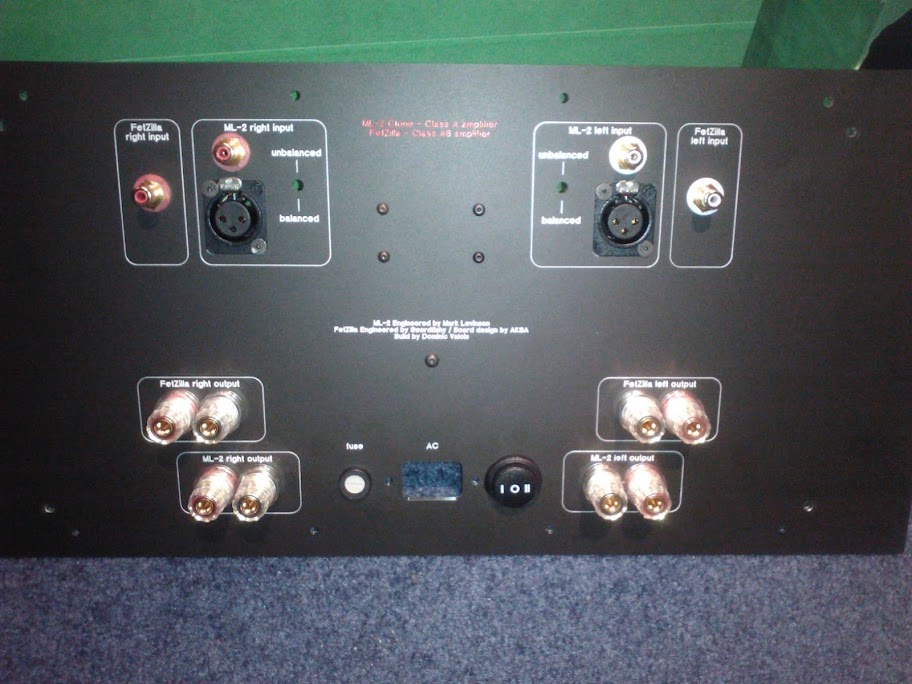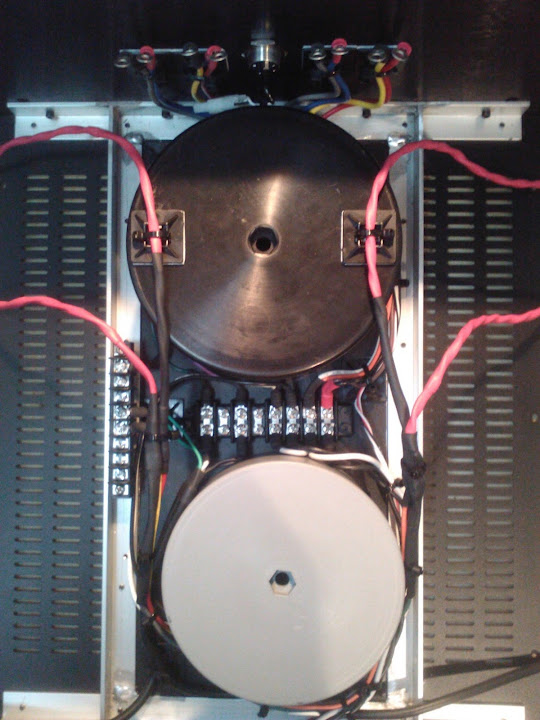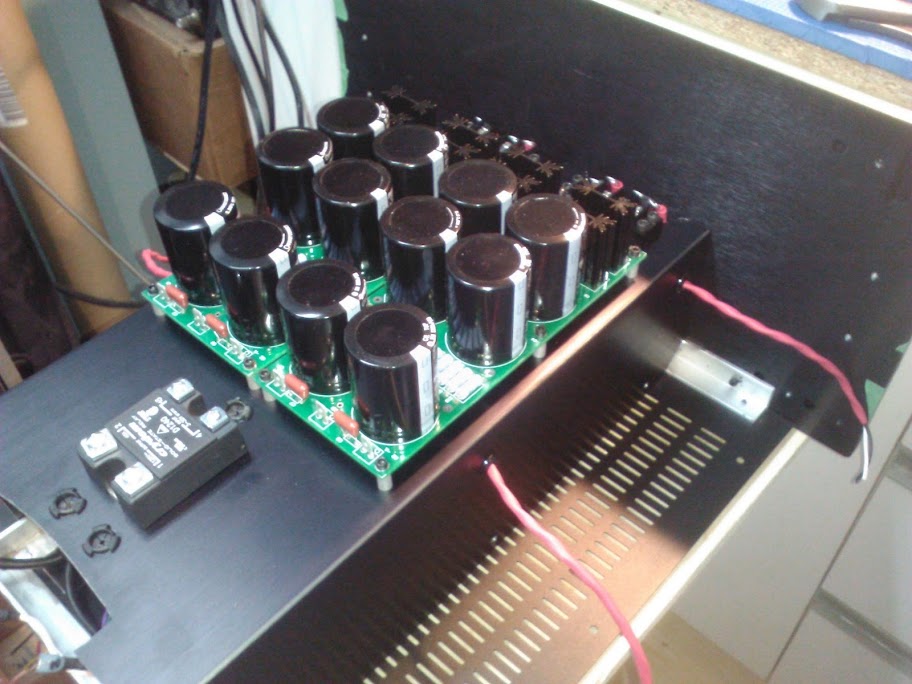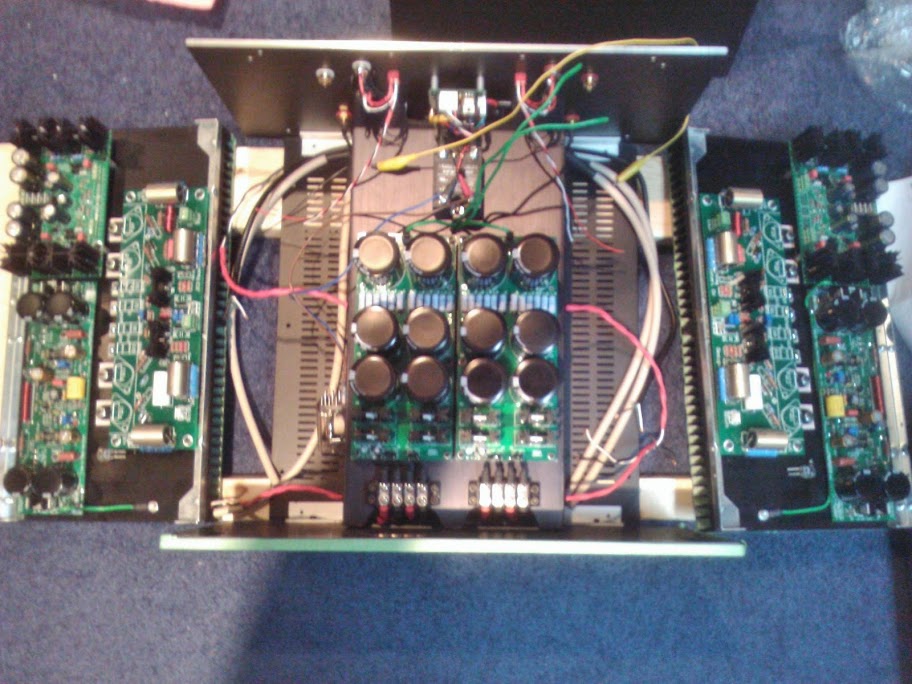Very reasonable price!
Thank you everyone for your help here.
Mike, I was alerted to Profusion just last night through Rod Elliott's ESP webpage... his P101 power amplifier uses the 2SK/J or 10N20/P20 compliments and Profusion is his suggested source. Yes.... cheap!
Procuring components is by FAR my least favourite part of this hobby. I was at the computer for nearly 5 hours yesterday, scouring through listings on multiple sites for FETZilla parts... not even exotic ones, just appropriate is satisfactory at this stage.
Anyway, the outputs are about the last parts that I still need and I can start constructing a test bed.
Thanks again everyone.
Tani.
Mike, I was alerted to Profusion just last night through Rod Elliott's ESP webpage... his P101 power amplifier uses the 2SK/J or 10N20/P20 compliments and Profusion is his suggested source. Yes.... cheap!
Procuring components is by FAR my least favourite part of this hobby. I was at the computer for nearly 5 hours yesterday, scouring through listings on multiple sites for FETZilla parts... not even exotic ones, just appropriate is satisfactory at this stage.
Anyway, the outputs are about the last parts that I still need and I can start constructing a test bed.
Thanks again everyone.
Tani.
Procuring components is by FAR my least favourite part of this hobby. I was at the computer for nearly 5 hours yesterday, scouring through listings on multiple sites for FETZilla parts... not even exotic ones, just appropriate is satisfactory at this stage.
.
yes but wasn't it satisfying when you finally found them ? kinda like .... nevermind . back on topic
Folks,
Been a long time.....
Recently I was in Brisbane for a week and went to see Swordfishy (aka Greg!).
Brisbane is around 1250 miles (2000 kms) north of Melbourne for those whose Oz geography is rusty... its more than two hours by A320.
He is an absolutely terrific guy. He graciously received me and my friend and gave us great coffee and a tasty Danish pastry. We chatted about all sorts of things, then repaired to his shed where he is considering installing a Buick 3.8l V6 into a pristine '88 BMW 318. Great project, Greg!!
Now, do we have anyone here who would like to give his listening impressions of the great and magnificent FetZilla?
Love to hear any views, really would......
Cheers,
Hugh
Been a long time.....
Recently I was in Brisbane for a week and went to see Swordfishy (aka Greg!).
Brisbane is around 1250 miles (2000 kms) north of Melbourne for those whose Oz geography is rusty... its more than two hours by A320.
He is an absolutely terrific guy. He graciously received me and my friend and gave us great coffee and a tasty Danish pastry. We chatted about all sorts of things, then repaired to his shed where he is considering installing a Buick 3.8l V6 into a pristine '88 BMW 318. Great project, Greg!!
Now, do we have anyone here who would like to give his listening impressions of the great and magnificent FetZilla?
Love to hear any views, really would......
Cheers,
Hugh
Hi Hugh,
I haven't been on these forums much in recent months but as with most of my hobbies it seems I am returning to audio yet again, and hence am back and just saw your post.
It was great to have you up here and to finally meet you in person. Not sure the coffee was good, but the Brumby's bakery sure did a good job of the pastries!
Thanks again for making the effort to visit and for sharing some of your new and not so new ideas. I'm looking forward to seeing where you take them. As usual your infinite knowledge on practically any subject from electronics to engines and philosophy was inspiring.
I'm currently working on a new design using transistors and vertical fets. Mostly because I want a little more power and freedom from the use of exotic parts.
I have to say that trying to get vertical fets to work well in a simple circuit just illustrates how nice the lateral devices in Fetzilla are. Being able to drive them with only a few mA, and being able to completely dispense with temperature compensation is such a bonus. Using vertical fets generally requires a minimum of 3 extra active devices - drivers and Vbe multiplier. Things don't get much simpler or stable than Fetzilla and it's amazing that so few parts can come together in such a harmonious and effective combination.
I haven't been on these forums much in recent months but as with most of my hobbies it seems I am returning to audio yet again, and hence am back and just saw your post.
It was great to have you up here and to finally meet you in person. Not sure the coffee was good, but the Brumby's bakery sure did a good job of the pastries!
Thanks again for making the effort to visit and for sharing some of your new and not so new ideas. I'm looking forward to seeing where you take them. As usual your infinite knowledge on practically any subject from electronics to engines and philosophy was inspiring.
I'm currently working on a new design using transistors and vertical fets. Mostly because I want a little more power and freedom from the use of exotic parts.
I have to say that trying to get vertical fets to work well in a simple circuit just illustrates how nice the lateral devices in Fetzilla are. Being able to drive them with only a few mA, and being able to completely dispense with temperature compensation is such a bonus. Using vertical fets generally requires a minimum of 3 extra active devices - drivers and Vbe multiplier. Things don't get much simpler or stable than Fetzilla and it's amazing that so few parts can come together in such a harmonious and effective combination.
FetZilla chassis almost finished
Hi Hugh,
Many months past since I have purchased the FetZilla but I can honestly say that I'm almost finished with the chassis!
Well, it is actually a dual amp chassis... I had bought a very large chassis to put in a ML-2 clone (Class A biased at 1 amp runs really hot...). Because there was so much space in the chassis I decided to do something original and put in the FetZilla and ML-2.
Of course they won't run at the same time due to massive heat issue that would arise BUT there's a master selector switch in the back and then I can power everything using the front momentary switch (using the AMB switch driver with Solid State Relay and temperature sensor for heatsink)
Here's a peek of what it's going to look like...

Back panel

Transformer section that will be covered to hide wires

Transformer cover with PSU for ML-2 (the cable layout has changed slightly since last night...)

Sorry this one is blurry... Wires will all be nicely tied up in the end...

So there it is!
BTW, I'd love to take those board I left you last time if you still have them... Please PM me.
Thanks
Do
Hi Hugh,
Many months past since I have purchased the FetZilla but I can honestly say that I'm almost finished with the chassis!
Well, it is actually a dual amp chassis... I had bought a very large chassis to put in a ML-2 clone (Class A biased at 1 amp runs really hot...). Because there was so much space in the chassis I decided to do something original and put in the FetZilla and ML-2.
Of course they won't run at the same time due to massive heat issue that would arise BUT there's a master selector switch in the back and then I can power everything using the front momentary switch (using the AMB switch driver with Solid State Relay and temperature sensor for heatsink)
Here's a peek of what it's going to look like...

Back panel

Transformer section that will be covered to hide wires

Transformer cover with PSU for ML-2 (the cable layout has changed slightly since last night...)

Sorry this one is blurry... Wires will all be nicely tied up in the end...

So there it is!
BTW, I'd love to take those board I left you last time if you still have them... Please PM me.
Thanks
Do
Last weekend I visited Greg (aka Swordfishy and GregH2). I took at few photos that you can see at
Bottlenecks Audio: Visiting Swordfishy (aka GregH2)
It's always interesting to meet people who you know from forums and my experience is that they are always friendly and willing to share their experience and knowledge. Greg is no exception.
ray
Bottlenecks Audio: Visiting Swordfishy (aka GregH2)
It's always interesting to meet people who you know from forums and my experience is that they are always friendly and willing to share their experience and knowledge. Greg is no exception.
ray
Last weekend I visited Greg (aka Swordfishy and GregH2). I took at few photos that you can see at
Bottlenecks Audio: Visiting Swordfishy (aka GregH2)
It's always interesting to meet people who you know from forums and my experience is that they are always friendly and willing to share their experience and knowledge. Greg is no exception.
ray
Looks like you had a good time - I think it's time for another round of group buys when Hugh gets better !!
Great design Greg, this was still the most rewarding hifi project for me yet.
AJ
Hi,
Finally got sometime to finish off the Fetzilla today, fixed at 24V across R12, quiescent at at 37mV and offset is less than 2mV. My transformer were marked as 26VAC but measured to be 29VAC, a bit hight. The initial listening is very sweet sound, detail and deep sound stage and I will burn in a bit more tomorrow. The only thing I not sure is the temperature is a bit high at 55 degree C without playing hard and the room is less than 28 degree C. Is this normal? Is there anything else I should check?



Finally got sometime to finish off the Fetzilla today, fixed at 24V across R12, quiescent at at 37mV and offset is less than 2mV. My transformer were marked as 26VAC but measured to be 29VAC, a bit hight. The initial listening is very sweet sound, detail and deep sound stage and I will burn in a bit more tomorrow. The only thing I not sure is the temperature is a bit high at 55 degree C without playing hard and the room is less than 28 degree C. Is this normal? Is there anything else I should check?



I ant to say something I realized recently. I as told to try different caps for the bias generator bypass. I've observed many times in the amps I've designed that simply touching this cap changed the stability of the amp drastically. This makes sense. The VAS output is a sensitive node ith large signal. Any small capacitance or nearby trace can have an effect. The bypass cap itself has a large surface area, usually most of the surface area of the VAS output trace comes from this cap. So the cap is essentially a radiator or antenna. The size of the cap you put here ill determine a lot of hidden factors such as radiation to other traces, and total capacitance to ground. Furthermore RF coupling through EM aves may turn it into an antenna.
The Fetzilla has FET outputs so the capacitance from this node is already high. The capacitor still radiates hoever. I find in my latest prototype I had to sanditch some aluminum foil in some masking tape and shield nearby traces from this capacitor in order to achieve stability comparable to simulation.
In any case, I thought it may be a good idea to solder a ire to ground and rap it a fe times around the bias generator bypass cap to short out its large EM field. I used a strip of foil stuck in tape, but I think the ire should be sufficient.
I ould try this only if you're experimenting, the official Fetzilla is fine as it is.
The Fetzilla has FET outputs so the capacitance from this node is already high. The capacitor still radiates hoever. I find in my latest prototype I had to sanditch some aluminum foil in some masking tape and shield nearby traces from this capacitor in order to achieve stability comparable to simulation.
In any case, I thought it may be a good idea to solder a ire to ground and rap it a fe times around the bias generator bypass cap to short out its large EM field. I used a strip of foil stuck in tape, but I think the ire should be sufficient.
I ould try this only if you're experimenting, the official Fetzilla is fine as it is.
I ant to say something I realized recently. I as told to try different caps for the bias generator bypass. I've observed many times in the amps I've designed that simply touching this cap changed the stability of the amp drastically. This makes sense. The VAS output is a sensitive node ith large signal. Any small capacitance or nearby trace can have an effect. The bypass cap itself has a large surface area, usually most of the surface area of the VAS output trace comes from this cap. So the cap is essentially a radiator or antenna. The size of the cap you put here ill determine a lot of hidden factors such as radiation to other traces, and total capacitance to ground. Furthermore RF coupling through EM aves may turn it into an antenna.
The Fetzilla has FET outputs so the capacitance from this node is already high. The capacitor still radiates hoever. I find in my latest prototype I had to sanditch some aluminum foil in some masking tape and shield nearby traces from this capacitor in order to achieve stability comparable to simulation.
In any case, I thought it may be a good idea to solder a ire to ground and rap it a fe times around the bias generator bypass cap to short out its large EM field. I used a strip of foil stuck in tape, but I think the ire should be sufficient.
I ould try this only if you're experimenting, the official Fetzilla is fine as it is.
Does your Fetzilla runs hot? Which bypass cap you were refeering to?
Bias generator bypass. Bypasses the bias pot...
My fetzilla ran fine. I just thought I ould mention it for those to hom it ould be useful to kno.
* My key does not ork.
Try ALT+87 for "W" and ALT+119 for "w".
Bias generator bypass. Bypasses the bias pot...
My fetzilla ran fine. I just thought I ould mention it for those to hom it ould be useful to kno.
* My key does not ork.
Is it C9 22uf that you are refeering to?
- Status
- This old topic is closed. If you want to reopen this topic, contact a moderator using the "Report Post" button.
- Home
- More Vendors...
- AKSA
- Swordfishy/ASPEN FETZILLA power amp